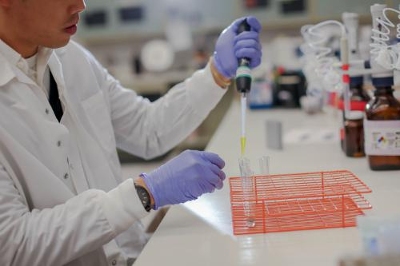May 16, 2017
Drug use in the American workforce, fueled by illicit drugs, reached the highest positivity rate in 12 years, according to an analysis of more than ten million workforce drug test results released today by Quest Diagnostics (NYSE: DGX), the world’s leading provider of diagnostic information services.
The annual Quest Diagnostics Drug Testing Index™ will be presented at the Drug and Alcohol Testing Industry Association (DATIA) annual conference this week in Orlando, Florida. Overall positivity in urine drug testing among the combined U.S. workforce in 2016 was 4.2 percent, a five percent relative increase over last year’s rate of 4.0 percent, and the highest annual positivity rate since 2004 (4.5%).
“This year’s findings are remarkable because they show increased rates of drug positivity for the most common illicit drugs across virtually all drug test specimen types and in all testing populations,” said Barry Sample, PhD, senior director, science and technology, Quest Diagnostics Employer Solutions. “Our analysis suggests that employers committed to creating a safe, drug-free work environment should be alert to the potential for drug use among their workforce.”
Cocaine Continues Upward Trend
The positivity rate in urine testing for cocaine increased for the fourth consecutive year in the general U.S. workforce and for the second consecutive year in the federally-mandated, safety-sensitive workforce. Cocaine positivity increased 12 percent in 2016, reaching a seven-year high of 0.28 percent, compared to 0.25 percent in 2015 in the general U.S. workforce, and seven percent among federally-mandated, safety-sensitive workers to 0.28 percent, compared to 0.26 percent in 2015.
Marijuana Positivity Increases Dramatically over Last Three Years; Increases in Colorado and Washington Double the National Average
Marijuana positivity continued its upward climb in both the federally-mandated, safety-sensitive and general U.S. workforces. In oral fluid testing, which detects recent drug use, marijuana positivity increased nearly 75 percent, from 5.1 percent in 2013 to 8.9 percent in 2016 in the general U.S. workforce. Marijuana positivity also increased in both urine testing (2.4% in 2015 versus 2.5% in 2016) and hair testing (7.0% in 2015 versus 7.3% in 2016) in the same population.
Among the federally-mandated, safety-sensitive workforce, which only utilizes urine testing, marijuana positivity increased nearly ten percent (0.71% in 2015 versus 0.78% in 2016), the largest year-over-year increase in five years.
Methamphetamine Positivity Remains High
Amphetamines (which includes amphetamine and methamphetamine) positivity continued its year-over-year upward trend, increasing more than eight percent in urine testing in both the general U.S. and federally-mandated, safety-sensitive workforces compared to 2015. Throughout the last decade, this rise has been driven primarily by amphetamine use which includes certain prescription drugs such as Adderall®.
Although methamphetamine positivity in urine testing declined between 2005 and 2008, the positivity rate plateaued between 2008 and 2012, and has increased steadily since. Between 2012 and 2016, it climbed 64 percent in the general U.S. workforce and 14 percent among federally-mandated, safety-sensitive workers. In oral fluid, methamphetamines positivity increased 75 percent between 2013 (0.24%) and 2016 (0.42%).
Heroin Detection Plateaus in General U.S. Workforce, While Prescription Opiate Detection Declines
After four straight years of increases, in 2016, urine testing positivity for heroin, indicated by the presence of the 6-acetylmorphine (6-AM) metabolite, held steady in the general U.S. workforce and declined slightly among federally-mandated, safety-sensitive workers.
Prescription opiate positivity – including hydrocodone, hydromorphone and oxycodones – declined in urine testing among the general U.S. workforce. Oxycodones have exhibited four consecutive years of declines, dropping 28 percent from 0.96 percent in 2012 to 0.69 percent in 2016. Hydrocodone and hydromorphone both showed double-digit declines in both 2015 and 2016 (0.92% in 2015 to 0.81% in 2016) and (0.67% in 2015 to 0.59% in 2016), respectively.
About the Quest Diagnostics Drug Testing Index
The Quest Diagnostics Drug Testing Index (DTI) examines test results according to three categories of workers: federally-mandated, safety-sensitive workers; the general workforce; and the combined U.S. workforce. Federally-mandated, safety-sensitive workers include pilots, bus and truck drivers, and workers in nuclear power plants, for whom routine drug testing is mandated by the U.S. Department of Transportation and the Nuclear Regulatory Commission. Quest Diagnostics has analyzed annual workplace drug testing data since 1988. The strengths of the Drug Testing Index analysis include its large, nationally representative sample size, longitudinal monitoring, a testing population that is generally reflective of the U.S. workforce and the quality of the company's drug testing services to confirm positive results. Limitations include analysis only of employers that perform drug testing with the company and a lack of exact cross-specimen comparisons due to variations in substances for which employers test. Quest Diagnostics has analyzed annual workplace drug testing data since 1988, and publishes the findings as a public service.

